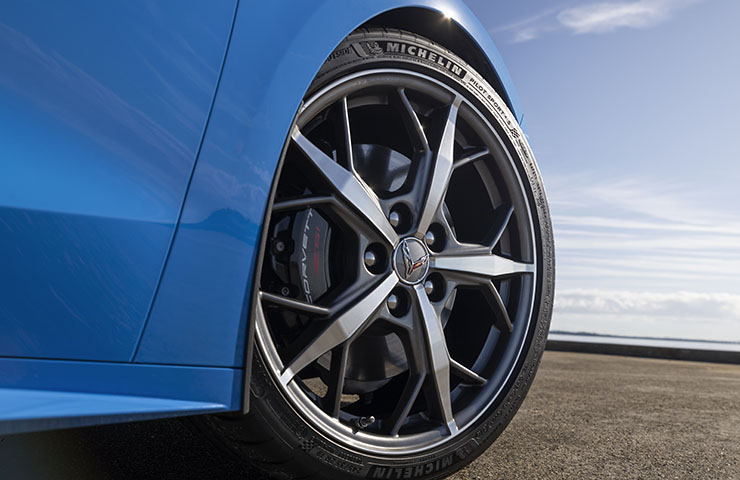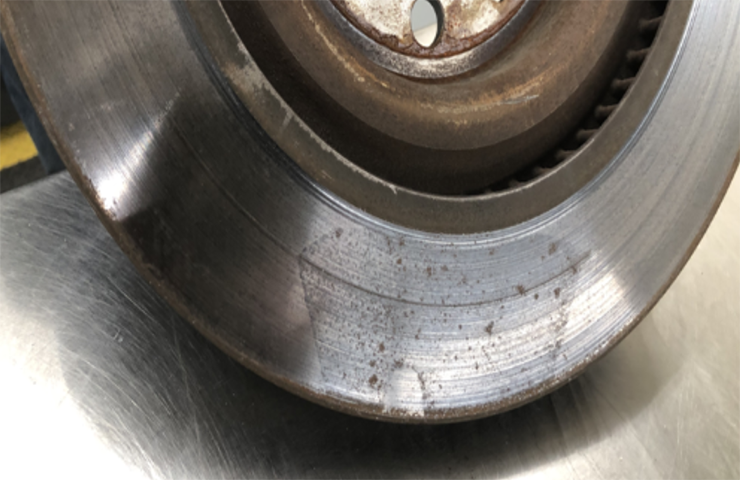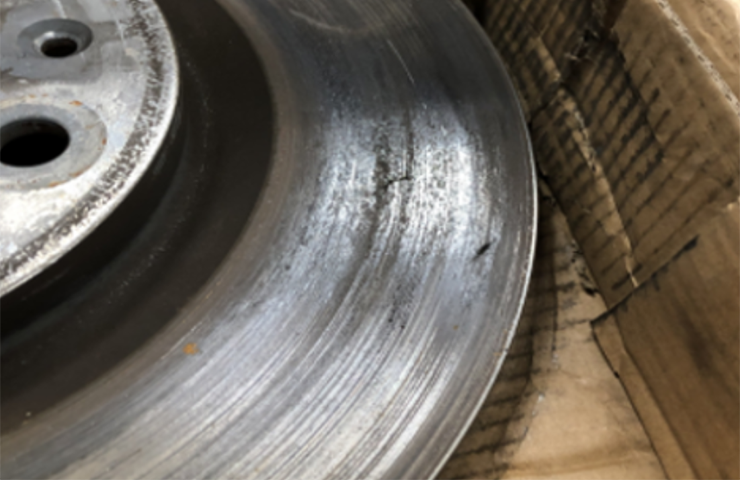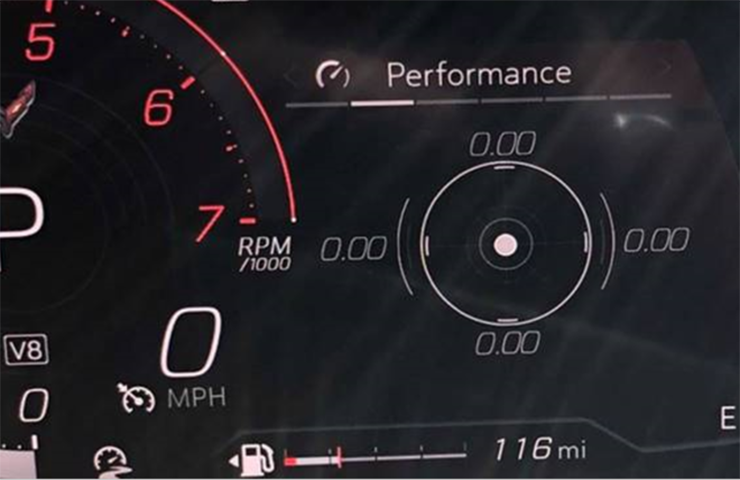Some 2021-2022 Corvettes equipped with the Z51 Performance Package (Fig. 1) may have a brake pulsation or grinding sound when applying the brakes. There also may be a pitting condition seen on the brake rotor surface. These conditions are most commonly found after the vehicle sits for an extended period of time, especially in high humidity.
 Fig. 1
Fig. 1
TIP: These brake rotor conditions are outlined in the Owner’s Manual and should be reviewed with the customer.
Typically, the brake rotor conditions are caused by corrosion pad spotting (Fig. 2) and surface grooving (Fig. 3) on the rotor surface. Burnishing the brakes can help to restore optimal brake performance and reduce brake noise.
 Fig. 2
Fig. 2
 Fig. 3
Fig. 3
Brake Burnishing Procedure for Corrosion Cleanup
The brake burnishing procedure should only be performed on Z51 models with the J55 brake system. Performing the burnishing procedure on the JL9 base brake system may result in brake damage. In addition, the new vehicle break-in period should be completed before performing the brake burnishing procedure in order to help prevent damage to the engine.
Refer to Bulletin #22-NA-026 and the Owner’s Manual for the complete brake burnishing procedure. The procedure includes applying the brakes 10 times starting at 60 mph (100 km/h) to 30 mph (50 k/h) while decelerating at 0.4g, which is a medium brake application. The Friction Circle (or Friction Bubble), found under the Performance menu on the instrument cluster, can be used to monitor the g-force. (Fig. 4) Use the Driver Information Center (DIC) steering wheel controls to view the menus on the instrument cluster. Between brake applications, the vehicle should be driven for at least 0.3 miles (0.5 km).
 Fig. 4
Fig. 4
While performing the procedure, the brake pads may smoke and produce an odor. The braking force and pedal travel also may increase. After the procedure, the brake pads may appear white at the rotor contact.
Brake Noise
As with all high-performance brake systems, some amount of brake squeal is normal. High-performance brake systems provide superior fade resistance, but will produce increased brake squeal and brake dust on the wheels and calipers as compared to standard brake linings.
In addition, variations in driving conditions such as the weather, environment, driving patterns, differences in vehicle loading, and type or style of driving, can affect brake wear as well as cause brake noise. A brake squeal sound may occur after a period of non-use, on cold brakes, and in high humidity conditions. A grinding sound also may be caused by light corrosion forming on the friction surfaces during non-use. These are normal conditions that usually disappear after the first few brake applications.
For additional information, refer to Bulletin #22-NA-026.
– Thanks to Jeff Strausser


















